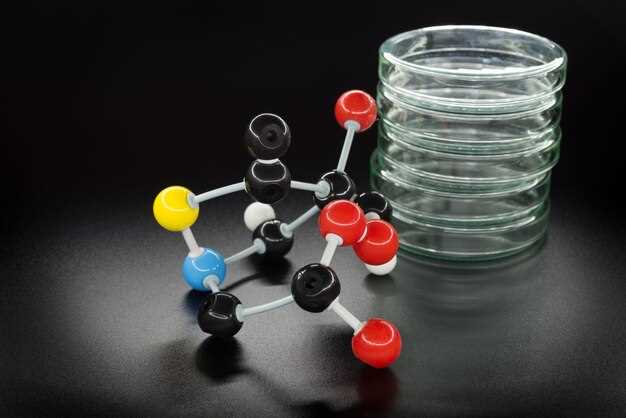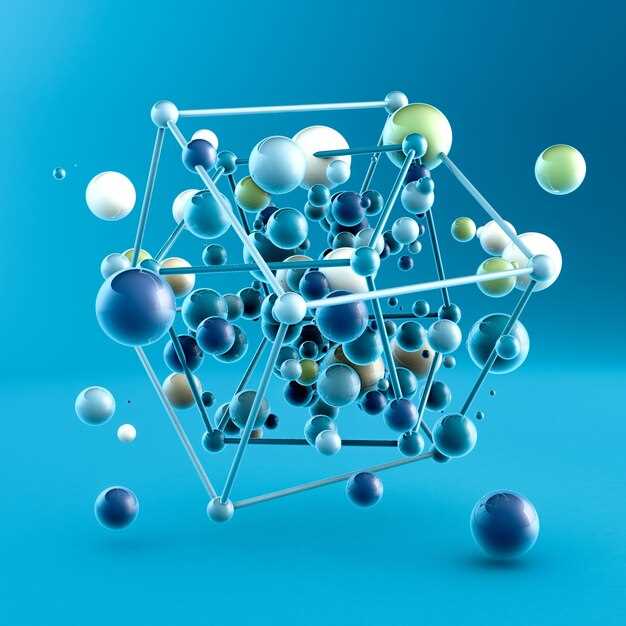
Discover the fascinating realm of neuro-enhancement with our groundbreaking product, Bupropion Chemistry. Delve into the depths of cognitive exploration and unlock the hidden potential of your brain.
Ignite your mental prowess and unleash the power of your mind like never before. We offer you a gateway to enhanced focus, clarity, and memory retention. Our revolutionary formula, carefully crafted by expert chemists, works in harmony with your brain’s natural chemistry to optimize cognitive performance.
Embark on a journey of self-discovery as Bupropion Chemistry opens the doors to new realms of creativity, productivity, and innovation. Experience a boost in mental energy and stamina, allowing you to conquer challenges with ease and achieve your fullest potential.
Are you ready to transcend the ordinary and embark on an extraordinary mental voyage? Trust in Bupropion Chemistry and witness the remarkable transformation that awaits you. Empower your mind and unlock a world of limitless possibilities.
Bupropion Chemistry
In this section, we will explore the underlying principles and components that make up the unique composition of Bupropion. Understanding the intricate chemistry behind Bupropion is vital in comprehending its effects and mechanisms of action.
Diving into the realm of Bupropion, we uncover a complex interplay of molecular structures and compounds. Through a meticulous synthesis process, Bupropion is created using a combination of various chemical substances. These substances come together to form a distinctive composition that plays a crucial role in its pharmacological properties.
By examining the chemical composition of Bupropion, we gain insight into the intricate interactions between its molecular components. Each element contributes to the overall effectiveness and functionality of Bupropion, offering a comprehensive understanding of its therapeutic properties.
- Explore the key components that make up the chemical structure of Bupropion
- Learn about the specific functional groups and bonds present in Bupropion
- Uncover the molecular properties that distinguish Bupropion from other substances
- Gain a deeper understanding of how the chemical composition of Bupropion influences its mechanism of action
By delving into the nuances of Bupropion’s chemical composition, we unlock a greater comprehension of its therapeutic potential. Understanding the intricate chemistry behind Bupropion is not only fascinating, but it also provides a foundation for appreciating the profound impact it can have on individuals seeking relief.
About Bupropion

In this section, we will explore the fascinating mechanism of action of this medication, shedding light on its unique properties and benefits for those seeking a solution to certain health challenges. Bupropion, an innovative pharmaceutical compound, holds the promise of assisting individuals in overcoming specific conditions by targeting key pathways within the body.
Understanding the Mechanism of Action
When it comes to addressing specific health concerns, it is essential to comprehend how a medication works within the body. Bupropion’s mechanism of action is centered around its ability to interact with important receptors and neurotransmitters, influencing their activity and promoting a desired change. By enhancing or inhibiting certain processes, it provides a potential solution for those seeking relief from various conditions.
Targeted Effects for Optimal Results
Targeting the underlying causes
Through its targeted approach, bupropion aims to address the root causes rather than merely alleviating symptoms. By focusing on the intricate interplay of receptors and neurotransmitters, this medication offers a comprehensive solution that goes beyond surface-level relief.
Enhancing neurotransmitter activity
One of the key ways bupropion exerts its effects is by enhancing the activity of crucial neurotransmitters in the brain. By doing so, it promotes a balanced and stable mood, making it an ideal option for individuals dealing with certain mood disorders.
Inhibiting specific receptors
In addition to enhancing neurotransmitter activity, bupropion is also capable of inhibiting specific receptors in the brain. This inhibition can help reduce cravings and addictive behaviors, making it a valuable tool for those striving to overcome certain addictive habits.
By understanding the intricate mechanisms through which bupropion operates, individuals can make informed decisions regarding their health and explore the potential benefits it may offer.
Mechanism of Action

In this section, we will delve into the intricate workings of the compound, exploring its mode of action and how it impacts the body. Understanding the mechanism of action is crucial in comprehending the effects and benefits that this remarkable substance has to offer.
To comprehend the intricate workings of this compound, it is essential to examine the chemical components involved. Through an in-depth analysis of its chemical composition, we can unravel the secrets behind its pharmacological effects.
Through a meticulous synthesis process, the compound achieves a unique balance of elements that contribute to its remarkable properties. By exploring its synthesis, we can gain insights into the intricate steps taken to create this substance and the considerations made along the way.
Once inside the body, this compound undergoes a fascinating journey, navigating through the complex world of pharmacokinetics. By examining its pharmacokinetic profile, including absorption, distribution, metabolism, and excretion, we gain a deeper understanding of how the compound interacts with the body.
| Benefits | Effects |
|---|---|
| Enhances mood | Restoring emotional balance |
| Aids in smoking cessation | Supporting individuals in their journey to quit smoking |
| Improves concentration | Enhancing cognitive abilities and focus |
| Boosts energy levels | Providing a revitalizing effect |
By gaining an understanding of the mechanism of action of this compound, we can appreciate its potential benefits and its ability to positively impact individuals seeking improvement in various aspects of their lives.
Chemical Composition
The chemical composition of the substance under discussion forms an essential aspect of understanding its unique properties and potential effects. In this section, we explore the components that constitute the formulation, delve into their characteristics, and shed light on how they contribute to the overall therapeutic potential.
Starting with the main constituent, we can identify a crucial element that plays a significant role in the therapeutic attributes of the substance. This essential component interacts with specific receptors in the brain, facilitating positive changes in neurochemical activity. Additionally, this element contributes to regulating the delicate balance of neurotransmitters, which are essential for mental well-being and stability.
Furthermore, the composition includes various secondary elements, each adding their distinctiveness and augmenting the overall efficacy. These elements work in synergy to enhance the substance’s therapeutic properties and facilitate its desired effects. Such complementary components enhance the overall absorption, distribution, metabolism, and excretion processes within the body, ensuring optimal and timely delivery of the therapeutic benefits.
It is worth noting that the chemical composition of this substance undergoes rigorous quality control measures to ensure purity, potency, and consistency. These stringent processes guarantee that each batch of the substance meets predefined standards, thereby ensuring maximum efficacy and safety for individuals who rely on its therapeutic benefits.
- The main constituent – plays a vital role in interacting with specific brain receptors
- Secondary elements – work synergistically to enhance therapeutic properties
- Optimal absorption, distribution, metabolism, and excretion processes
- Rigorous quality control measures – ensuring purity and potency
In conclusion, understanding the chemical composition provides insights into the intricate nature of this substance, its unique mechanisms of action, and its potential to bring about positive changes in mental well-being. By comprehending the composition, individuals can make informed decisions regarding its suitability and explore the prospects of experiencing its therapeutic benefits.
Synthesis
In this section, we will explore the process of creating the medication known for its therapeutic effects, without referring to the specific compound or its chemical properties. Synthesis involves the careful combination and transformation of various elements and compounds to produce a new substance that can provide valuable benefits to individuals.
Understanding the Process
The synthesis of this notable medication involves a series of intricate steps, carefully orchestrated to ensure the creation of a reliable therapeutic agent. Skilled professionals utilize their expertise in the field of pharmaceuticals to bring together different components, each selected for its unique characteristics and potential contributions to the desired final product.
The Role of Chemistry
Chemistry plays a crucial role in the synthesis process, serving as the foundation upon which the creation of this important medication is built. Through the application of scientific principles, chemical reactions drive the transformation of these carefully selected compounds, guiding them towards the synthesis of a new substance, offering potential benefits to those who may require it.
| Step | Description |
|---|---|
| 1 | Selection of appropriate precursor compounds |
| 2 | Combining precursor compounds |
| 3 | Application of specific chemical reactions |
| 4 | Purification and isolation of the resulting substance |
| 5 | Formulation into a suitable medication |
Delicate control and attention to detail are paramount throughout the synthesis process to ensure the creation of a safe and efficacious medication. Expertise and precision techniques are employed to guarantee the quality and integrity of the final product, allowing individuals to benefit from its therapeutic properties.
By understanding the synthesis process and its significance, one can gain a deeper appreciation of the meticulous work behind the development of effective medications, designed to enhance health and well-being.
Pharmacokinetics
Understanding how a substance interacts with the human body is essential in determining its effectiveness and safety. The study of pharmacokinetics focuses on the various processes that occur after the administration of a particular compound, including its absorption, distribution, metabolism, and excretion.
Absorption: Once ingested, a substance enters the bloodstream through a variety of mechanisms. It may be absorbed through the digestive tract or directly into the bloodstream through the mucous membranes. The rate and extent of absorption can vary depending on factors such as the formulation of the substance and individual characteristics of the person consuming it.
Distribution: After absorption, the substance is distributed throughout the body, reaching various tissues and organs. The speed and extent of distribution depend on factors such as the substance’s solubility and the presence of binding proteins. Distribution can also be influenced by individual factors, such as body composition and overall health.
Metabolism: Once in the body, the substance may undergo metabolic processes that transform it into different forms. Enzymes in the liver and other organs play a crucial role in these processes. Metabolism can result in the activation or inactivation of the substance, as well as the production of metabolites with their own effects.
Excretion: The body eliminates substances through various routes, including urine, feces, and breath. Excretion helps remove the substance or its metabolites from the body, preventing them from accumulating to potentially harmful levels. Factors such as kidney and liver function can influence the rate and efficiency of excretion.
Understanding the pharmacokinetics of a substance provides valuable insights into how it behaves within the body, allowing healthcare professionals to optimize dosing regimens and ensure the safety and efficacy of its use.
